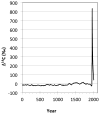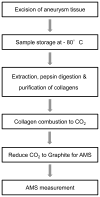Cerebral aneurysms: formation, progression, and developmental chronology
- PMID: 24323717
- PMCID: PMC4399795
- DOI: 10.1007/s12975-013-0294-x
Cerebral aneurysms: formation, progression, and developmental chronology
Abstract
The prevalence of unruptured intracranial aneurysms (UIAs) in the general population is up to 3%. Existing epidemiological data suggests that only a small fraction of UIAs progress towards rupture over the lifetime of an individual, but the surrogates for subsequent rupture and the natural history of UIAs are discussed very controversially at present. In case of rupture of an UIA, the case fatality is up to 50%, which therefore continues to stimulate interest in the pathogenesis of cerebral aneurysm formation and progression. Actual data on the chronological development of cerebral aneurysm has been especially difficult to obtain and, until recently, the existing knowledge in this respect is mainly derived from animal or mathematical models or short-term observational studies. Here, we review the current data on cerebral aneurysm formation and progression as well as a novel approach to investigate the developmental chronology of cerebral aneurysms.
Figures





References
-
- Weir B. Unruptured intracranial aneurysms: A review. J Neurosurg. 2002;96:3–42. - PubMed
-
- Vernooij MW, Ikram MA, Tanghe HL, Vincent AJ, Hofman A, Krestin GP, et al. Incidental findings on brain mri in the general population. N Engl J Med. 2007;357:1821–1828. - PubMed
-
- Vlak MH, Algra A, Brandenburg R, Rinkel GJ. Prevalence of unruptured intracranial aneurysms, with emphasis on sex, age, comorbidity, country, and time period: A systematic review and meta-analysis. Lancet neurology. 2011;10:626–636. - PubMed
-
- Krischek B, Inoue I. The genetics of intracranial aneurysms. Journal of human genetics. 2006;51:587–594. - PubMed
-
- Morita A, Fujiwara S, Hashi K, Ohtsu H, Kirino T. Risk of rupture associated with intact cerebral aneurysms in the japanese population: A systematic review of the literature from japan. J Neurosurg. 2005;102:601–606. - PubMed
Publication types
MeSH terms
Grants and funding
LinkOut - more resources
Full Text Sources
Other Literature Sources
Medical

